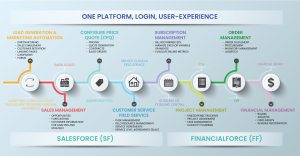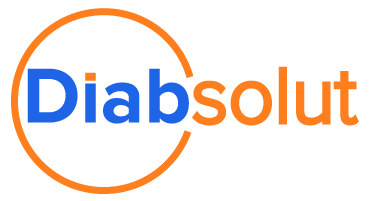A Review of the Lead-to-Cash Cycle and Methods of Management
Author: Essam Nessim

If you’ve seen the terminology Lead-to-Cash, Opportunity-to-Cash or Quote-to-Cash used when discussing business solutions, but aren’t exactly sure what those terms mean, they are referring to:
- The complete cycle or process from initiating a business transaction to the point of collecting and processing a customer’s payment
- All the tasks, systems, people, policies, procedures, and departments involved in that process, and how everything works together, from beginning to end
So, your business’ Lead-to-Cash solution is talking about how exactly your company moves from finding a lead to receiving revenue, and how each point along the way works and interacts.
Solutions used to manage this cycle will be unique based on the individual organization and industry, but this blog will review two common methods for Lead-to-Cash cycle management, the traditional and single platform models.
Traditional Lead-to-Cash Model
Businesses usually have a front office, a back office, and sometimes a siloed field team. The model for the traditional lead-to-cash cycle uses disparate systems, applications, or technology to handle a team or department’s tasks.
If you follow the arrow on the graphic below, you can see examples of the various tasks throughout the lead-to-cash cycle.

For each segment of the Lead-to-Cash cycle process, a business that uses the traditional model is reliant on:
- Complex integration to make sure information is complete and easy to access for every person that may need to reference it or analyze it
- Seamless communication
- The assumption that all information is complete and up-to-date
The problem here is that most businesses that rely on this model don’t have the right level of integration to avoid gaps. Lots of organizations still use manual processes like email to relay important customer information and spreadsheets to track and manage data.
Gaps and disconnect lead to the key challenges we see with the traditional model:
- A decline in customer satisfaction and loyalty
- Customers who struggle to get fast and reliable help from a business find it frustrating; this can negatively impact an organization’s image, customer retention rates, and bottom line
- Difficulty collaborating or communicating between departments or teams
- A lack of cohesion can disrupt the Lead-to-Cash cycle and cause job dissatisfaction
- No way to easily scale or grow to manage new customers, products, and/or services
- Higher costs for upkeep and management of separate technology and lines of business (LOBs)
- Systems that are out of sync usually require custom workarounds to maintain functionality which further increases IT costs
Single Platform Model
With the introduction of cloud computing that has become more secure, we’ve also had the introduction of the single platform model for the Lead-to-Cash cycle.
If you look at the graphic below, you can see an example of this model.

To visualize the difference between the traditional and single platform models, think of the traditional model as being wooden blocks on a table, and the single platform model being the baseplate for interlocking blocks:
- In this case, the Salesforce CRM is that base or platform
- The interlocking blocks are your systems for the Lead-to-Cash cycle, which are other Salesforce or partner products, such as Certinia — these are all made to easily connect to the CRM base mentioned above
Instead of working separately, they work and present as one solution through the platform:
- Different teams and departments have different tools and permissions, but all of the information is central and up-to-date
- Which provides a connected customer experience through a 360° view of their information, interactions, preferences, etc.
- Front office, back office, and field teams are able to rely on unified and streamlined processes
- It’s easier to collaborate between teams and departments
- Operational expenses due to errors, delays, and revenue leakage are eliminated
- As the technology is already made to work together, you avoid the higher upkeep costs listed in the previous section
Next Steps
Moving to the single platform model for the Lead-to-Cash cycle doesn’t have to be done all at once. Many organizations rely on industry-specific systems for aspects of their overall solutions or need to transition to a new solution more slowly. The benefits of the single-platform model are still achievable and relevant in both of these situations.
If you want information or advice on the best way to move towards a single platform solution for your organization, or want to learn more about any products mentioned, contact us.
Search
Trending Topics
- E22: Introduction to Field Service Personas – Java With Sugar Podcast
- The Role of Customer Success in a Professional Services Organization: A Path to Achieving Business Goals
- Addressing Customer Success Challenges in Today’s Market
- Field Service Efficiency During Workload Variations
- Working With and Without Asset Lifecycle Management
- E21: Trends & Future Options for ALM – Java With Sugar Podcast
- Building Better Habits to Ensure Maximum Dispatch Productivity
- E20: Leveraging Maintenance Plans & IoT for ALM – Java With Sugar Podcast
- E19: Introduction to Asset Lifecycle Management – Java With Sugar Podcast
- E18: Click FSE Migration to Salesforce Field Service – Java With Sugar Podcast
